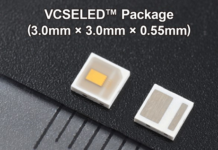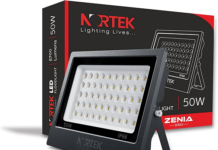
For most phosphor suppliers, the name of the game is to keep decreasing costs as volume increase and revenue remain essentially flat. But despite increasing commoditization, the LED phosphor & QDs industry still offers opportunities for innovative companies to strive. While price ranges for established composition will narrow, a significant gap between low end and top performers will persist. This will enable some suppliers to keep capturing significant added value.
The LED industry still has unmet needs in terms of phosphors. Companies able to develop and commercialize new narrow-band red and, to a lesser extend, green materials might still hit the jackpot… The “More than Moore” market research and strategy consulting company Yole released its Phosphors & QDs report: Phosphors & QDs: LED Downconverters for Lighting & Displays.
Saturating volume and continuous price pressure creates a challenging environment for phosphor suppliers. Indeed, after five years of cut-throat competition that has driven prices to levels that nobody would have believed sustainable just a few years back, phosphor prices slowed their free fall in 2016.
After experiencing a proliferation of new entrants in China in the 2012-2015 period, the phosphor & QDs market has entered in a new phase: with increasing demand for quality, consistency and customizations, the weakest players are exiting the market. Surviving companies have sizable R&D effort and long term expertise in researching, developing and manufacturing phosphors. Leading suppliers have also developed closer relationships with LED packaging companies, enabling a virtuous circle of co-development and feedback loops enabling further performance improvement.

The competition remains strong. Price, performance and ability to customize products for a specific need are strong element of differentiation. The analysts from Yole explain:
- A market can often be lost for a 1% difference in performance
- Phosphors need to be optimized and customized for each product: a phosphor delivering top performance for one package at one customer might underperform in another package
- The final performance of a phosphor in a LED package can vary based on parameters that are out of the control of the supplier: binder type, viscosity, mixing and dispensing method, procedures etc. To ensure optimum performance, close collaboration between the phosphor maker and the LED packager is required.
Regarding the current leading suppliers such as MCC, Intematix, Denka and other, Yole confirms their good market position. All of them remain on the top but strong companies are emerging in the Chinese market. While still focused on the domestic market, the consulting company is expecting some to become credible global players within the next 3 years. For example: Grirem, Yuji, Shield…
In parallel, Yole highlights the IP status of this industry. Key patents held by Nichia and Osram have started expiring in 2017 and will continue to do so in 2018. While both companies have since built on those patents and created broad families of intellectual property (IP), it will become much more difficult for them to prevent competitors from using garnet phosphors in their LED packages.
For more information visit: http://www.yole.fr/


















